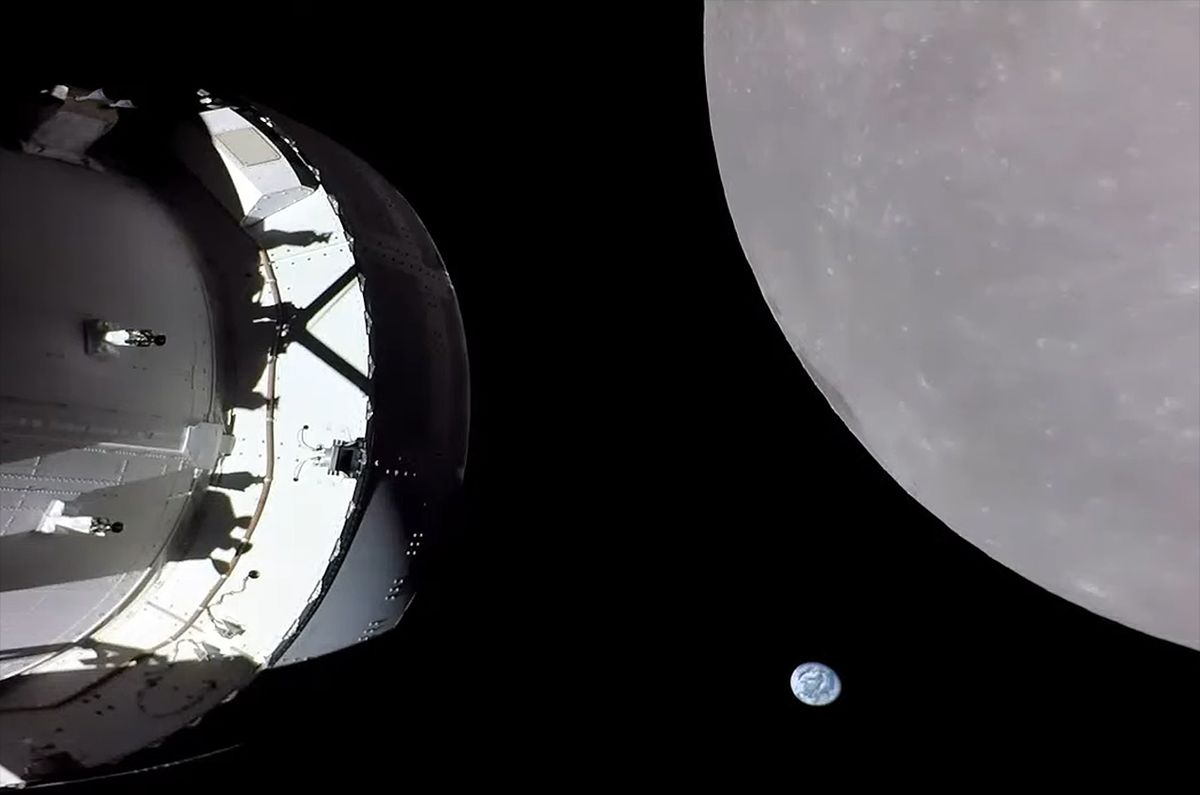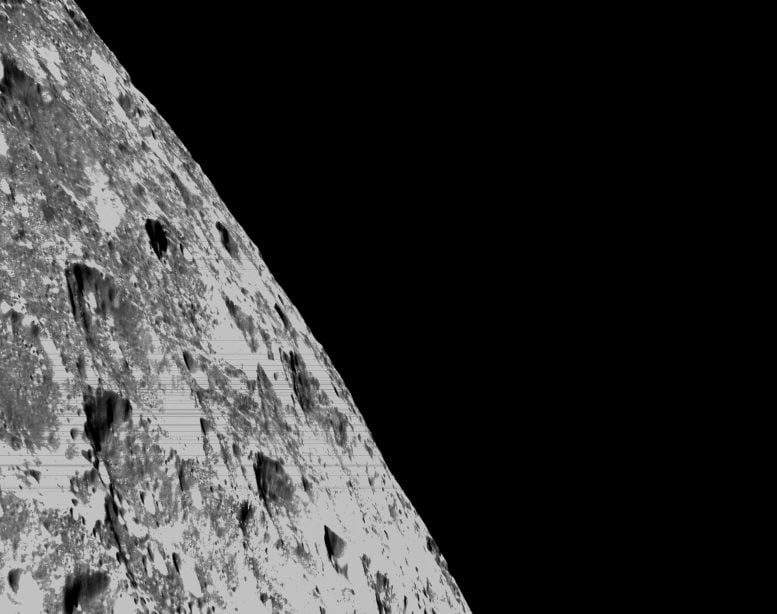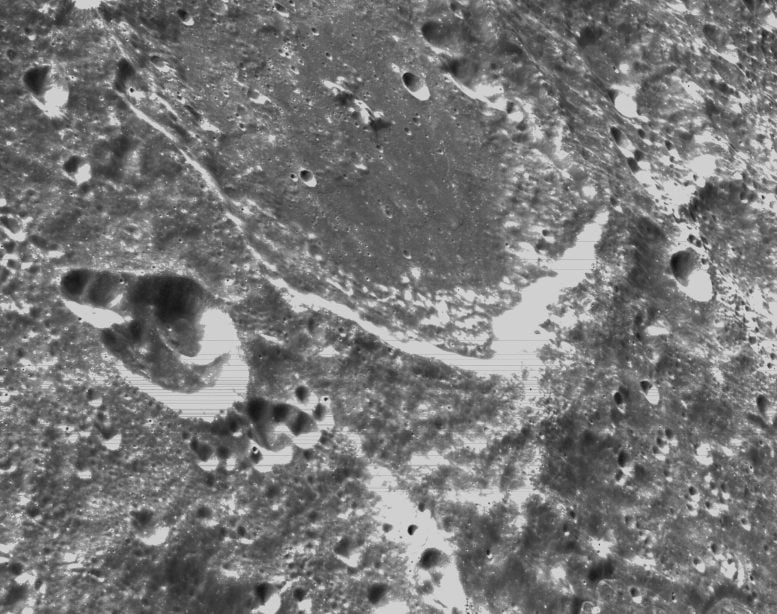In an experiment that ticks most of the mystery boxes in modern physics, a group of researchers announced on Wednesday that they had simulated a pair of black holes in a quantum computer and sent a message between them through a shortcut in space-time called a wormhole.
Physicists described the achievement as another small step in the effort to understand the relation between gravity, which shapes the universe, and quantum mechanics, which governs the subatomic realm of particles.
“This is important because what we have here in its construct and structure is a baby wormhole,” said Maria Spiropulu, a physicist at the California Institute of Technology and the leader of a consortium called Quantum Communication Channels for Fundamental Physics, which conducted the research. “And we hope that we can make adult wormholes and toddler wormholes step-by-step.”
In their report, published Wednesday in Nature, the researchers described the result in measured words: “This work is a successful attempt at observing traversable wormhole dynamics in an experimental setting.”
The wormhole that Dr. Spiropulu and her colleagues created and exploited is not a tunnel through real physical space but rather through an “emergent” two-dimensional space. The “black holes” were not real ones that could swallow the computer but lines of code in a quantum computer. Strictly speaking, the results apply only to a simplified “toy model” of a universe — in particular, one that is akin to a hologram, with quantum fields on the edge of space-time determining what happens within, sort of in the way that the label on a soup can describes the contents.
To be clear: The results of this experiment do not offer the prospect anytime soon, if ever, of a cosmic subway through which to roam the galaxy like Jodie Foster in the movie “Contact” or Matthew McConaughey in “Interstellar.”
“I guess the key question, which is perhaps hard to answer, is: Do we say from the simulation it’s a real black hole?” Daniel Jafferis, a physics professor at Harvard, said. “I kind of like the term ‘emergent black hole.’”
He added: “We are just using the quantum computer to find out what it would look and feel like if you were in this gravitational situation.” He and Alexander Zlokapa, a doctoral student at the Massachusetts Institute of Technology, are the lead authors of the paper.
Physicists reacted to the paper with interest and caution, expressing concern that the public and media would mistakenly think that actual physical wormholes had been created.
“The most important thing I’d want New York Times readers to understand is this,” Scott Aaronson, a quantum computing expert at the University of Texas in Austin, wrote in an email. “If this experiment has brought a wormhole into actual physical existence, then a strong case could be made that you, too, bring a wormhole into actual physical existence every time you sketch one with pen and paper.”
Daniel Harlow, a physicist at M.I.T. who was not involved in the experiment, noted that the experiment was based on a model of quantum gravity that was so simple, and unrealistic, that it could just as well have been studied using a pencil and paper.
“So I’d say that this doesn’t teach us anything about quantum gravity that we didn’t already know,” Dr. Harlow wrote in an email. “On the other hand, I think it is exciting as a technical achievement, because if we can’t even do this (and until now we couldn’t), then simulating more interesting quantum gravity theories would CERTAINLY be off the table.” Developing computers big enough to do so might take 10 or 15 years, he added.
Leonard Susskind, a physicist at Stanford University who was not part of the team, agreed. “They’re learning that they could do this experiment,” he said, adding: “The really interesting thing here is the possibility of analyzing purely quantum phenomena using general relativity, and who knows where that’s going to go.”
The two faces of Einstein

Wormholes entered the physics lexicon in 1935 as one of the weirder predictions of Albert Einstein’s general theory of relativity, which describes how matter and energy warp space to create what we call gravity. That year Einstein and his colleague, Nathan Rosen, showed in a paper that shortcuts through space-time, connecting pairs of black holes, could exist. The physicist John Wheeler later called these connectors “wormholes.”
Originally it seemed that wormholes were effectively useless; theory held that they would slam shut the instant anything entered them. They have never been observed outside of science fiction.
A month earlier that same year, in 1935, Einstein, Rosen and Boris Podolsky made another breakthrough, one they thought would discredit the chancy nature of quantum mechanics. They pointed out that quantum rules permitted what Einstein called “spooky action at a distance.” Measuring one of a pair of particles would determine the results of measuring the other particle, even if the two were light-years apart. Einstein thought this prediction was absurd, but physicists now call it “entanglement” and use it every day in the lab.
Until a few years ago, such quantum tricks weren’t thought to have anything to do with gravity. As a result, physicists were left with no theory of “quantum gravity” to explain what happened when the realms of inner space and outer space collided, as in the Big Bang or inside black holes.
But in 2013 Juan Maldacena, a theoretical physicist at the Institute for Advanced Study in Princeton, and Dr. Susskind proposed that these two phenomena — spooky action and wormholes — were actually two sides of the same coin, each described in a different but complementary mathematical language.
Those spooky, entangled particles, by this logic, were connected by equally mysterious wormholes. Quantum mechanics could be enlisted to study gravity, and vice versa. The equations that describe quantum phenomena turned out to have analogues in the Einsteinian equations for gravity.
“It’s mostly a matter of taste which description you use because they give exactly the same answer,” Dr. Jafferis said. “And that was an incredible discovery.”
Escape hatches
The recent wormhole experiment sought to employ the mathematics of general relativity to examine an aspect of quantum magic, known as quantum teleportation, to see if some new aspect of physics or gravity might be revealed.
In quantum teleportation, physicists use a set of quantum manipulations to send information between two particles — inches or miles apart — that are entangled in a pair, without the physicists knowing what the message is. The technology is expected to be the heart of a next-generation, unhackable “quantum internet.”
Physicists like to compare the teleportation process to two cups of tea. Drop a cube of sugar into one teacup, and it promptly dissolves — then, after a tick of the quantum clock, the cube reappears intact in the other teacup.
The experiment became conceivable after a pair of papers by Dr. Susskind and, independently, by Dr. Jafferis, Ping Gao of M.I.T., and Aron Wall, a theoretical physicist at the University of Cambridge. They suggested a way that wormholes could be made traversable, after all. What was needed, Dr. Gao and his collaborators said, was a small dose of negative energy at the exit end of the wormhole to prop open the hatch long enough for information to escape.
In classical physics, there is no such thing as negative energy. But in quantum theory, energy can be negative, generating an antigravitational effect. For example, so-called virtual particles, which flit in and out of existence using energy borrowed from empty space, can fall into a black hole, carrying a debt to nature in the form of energy that the black hole must then pay back. This slow leak, Stephen Hawking calculated in 1974, causes the black hole to lose energy and shrink.
When Dr. Spiropulu proposed trying to recreate this wormhole magic on a quantum computer, her colleagues and sponsors at the Department of Energy “thought I was completely nuts,” she recalled. “But Jafferis said, Let’s do it.”
Harnessing uncertainty
In ordinary computers, including the phone in your pocket, the currency of calculation is bits, which can be ones or zeros. Quantum computers run on qubits, which can be 0 or 1 or anywhere in between until they are measured or observed. This makes quantum computers super powerful for certain kinds of tasks, like factoring large numbers and (maybe one day) cracking cryptographic codes. In essence, a quantum computer runs all the possible variations of the program simultaneously to arrive at a solution.
“We make uncertainty an ally and embrace it,” Dr. Spiropulu said.
To reach their full potential, quantum computers will need thousands of working qubits and a million more “error correction” qubits. Google hopes to reach such a goal by the end of the decade, according to Hartmut Neven, head of the company’s Quantum Artificial Intelligence lab in Venice, Calif., who is also on Dr. Spiropulu’s team.
The Caltech physicist and Nobel laureate Richard Feynman once predicted that the ultimate use of this quantum power might be to investigate quantum physics itself, as in the wormhole experiment.
“I’m excited to see that researchers can live out Feynman’s dream,” Dr. Neven said.
The wormhole experiment was carried out on a version of Google’s Sycamore 2 computer, which has 72 qubits. Of these, the team used only nine to limit the amount of interference and noise in the system. Two were reference qubits, which played the roles of input and output in the experiment.
The seven other qubits held the two copies of code describing a “sparsified” version of an already simple model of a holographic universe called SYK, named after its three creators: Subir Sachdev of Harvard, Jinwu Ye of Mississippi State University and Alexei Kitayev of Caltech. Both SYK models were packed into the same seven qubits. In the experiment these SYK systems played the role of two black holes, one by scrambling the message into nonsense — the quantum equivalent of swallowing it — and then the other by popping it back out.
“Into this we throw a qubit,” Dr. Lykken said, referring to the input message — the quantum analog of a series of ones and zeros. This qubit interacted with the first copy of the SYK qubit; its meaning was scrambled into random noise and it disappeared.
Then, in a tick of the quantum clock, the two SYK systems were connected and a shock of negative energy went from the first system to the second one, briefly propping open the latter.
The signal then reappeared in its original unscrambled form — in the ninth and last qubit, attached to the second SYK system, which represented the other end of the wormhole.
One clue that the researchers were actually recording “wormholelike” behavior, Dr. Lykken said, was that signals emerged from the other end of the wormhole in the order that they went in.
In a Nature article accompanying Dr. Jafferis’s paper, Dr. Susskind and Adam Brown, a physicist at Stanford, noted that the results might shed light on some still-mysterious aspects of ordinary quantum mechanics. For instance, after the sugar cube dissolves in the first teacup, why does it reappear in the other cup in its original form?
“The surprise is not that the message made it across in some form, but that it made it across unscrambled,” the two authors wrote.
The easiest explanation, they added, is that the message went through a wormhole, albeit a “really short” one, Dr. Lykken said in an interview. In quantum mechanics, the shortest conceivable length in nature is 10⁻³³ centimeters, the so-called Planck length. Dr. Lykken calculated that their wormhole was maybe only three Planck lengths long.
“It’s the smallest, crummiest wormhole you can imagine making,” he said. “But that’s really cool because now we’re clearly doing quantum gravity.”
https://news.google.com/__i/rss/rd/articles/CBMiUWh0dHBzOi8vd3d3Lm55dGltZXMuY29tLzIwMjIvMTEvMzAvc2NpZW5jZS9waHlzaWNzLXdvcm1ob2xlLXF1YW50dW0tY29tcHV0ZXIuaHRtbNIBAA?oc=5
2022-11-30 16:00:12Z
1671227477

























